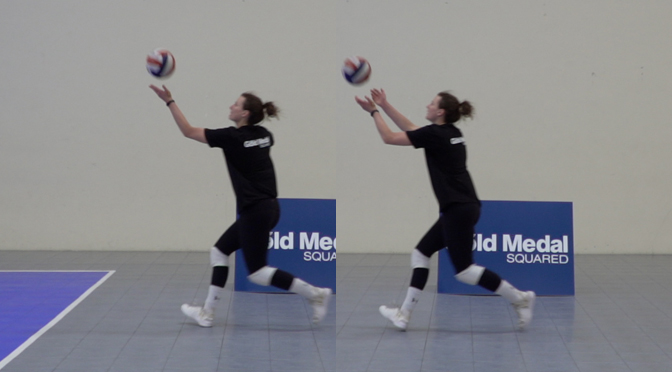
The serve is one of the most crucial skills in volleyball, setting the tone for each rally and giving the serving team a chance to seize control of the game. Whether you’re a beginner or an experienced player, mastering the art of serving can elevate your game and make you a valuable asset to your team. If you’re searching for a volleyball camp near me, improving your serve is likely high on your priority list. But what is the most effective serve in volleyball? The answer depends on the player’s skill level, strategy, and game situation. Let’s dive into the different types of serves and what makes them effective.
1. The Float Serve: Consistency and Unpredictability
The float serve is one of the most popular and effective serves in volleyball, particularly at the intermediate and advanced levels. It’s a serve that doesn’t spin, causing the ball to move unpredictably in the air, making it difficult for the opposing team to pass.
Why It’s Effective:
- Unpredictable Movement: The lack of spin causes the ball to “float” and change direction suddenly, challenging the receiver’s ability to predict its trajectory.
- Ease of Execution: Once mastered, the float serve is relatively easy to execute consistently, reducing errors.
- Strategic Advantage: Players can target specific zones or weaker passers on the opposing team.
How to Master It:
- Focus on a controlled toss, ensuring the ball is slightly in front of your hitting shoulder.
- Strike the ball with a firm, flat hand to minimize spin.
- Practice aiming for different zones on the court to keep opponents guessing.
The float serve is ideal for players looking to develop a reliable and strategic serving technique.
2. The Jump Float Serve: Power Meets Precision
A variation of the float serve, the jump float serve combines the unpredictability of a float serve with the added power of a jump. This serve is especially effective for players who want to add more velocity and height to their serves while maintaining control.
Why It’s Effective:
- Increased Power: The jumping motion adds force to the serve, making it harder to return.
- Angle of Attack: The jump allows the ball to travel at a steeper angle, reducing reaction time for the receiver.
- Unpredictability: Like the traditional float serve, the lack of spin makes it difficult to track.
How to Master It:
- Start with a controlled toss, ensuring the ball is in a position that allows for an upward jump.
- Focus on a strong, flat hand contact to maintain the float effect.
- Practice your footwork to synchronize the toss, jump, and hit seamlessly.
The jump float serve is a favorite among advanced players and a staple of competitive volleyball.
3. The Topspin Serve: Power and Aggression
The topspin serve is a high-velocity serve with a forward spin that creates a downward arc, making it difficult for opponents to control. This serve is ideal for aggressive players who want to put pressure on the receiving team.
Why It’s Effective:
- High Speed: The topspin serve is delivered with significant power, reducing reaction time for the receiver.
- Predictable Arc: While the trajectory is predictable, the speed and spin make it challenging to pass accurately.
- Versatility: It can be executed as a standing serve or combined with a jump for added power.
How to Master It:
- Toss the ball slightly higher than for a float serve to allow for a full arm swing.
- Make contact with the ball using your palm and snap your wrist to generate spin.
- Focus on a smooth follow-through to maintain accuracy and power.
The topspin serve is particularly effective for players with a strong arm swing and a desire to dominate from the service line.
4. The Jump Topspin Serve: Maximum Impact
The jump topspin serve is the most aggressive serve in volleyball, combining the power and spin of a topspin serve with the height and angle of a jump. This serve is often seen in high-level competitions, where players use it to gain a decisive advantage.
Why It’s Effective:
- Explosive Power: The combination of a jump and topspin results in a serve that’s difficult to return.
- Steep Trajectory: The jump creates a sharp downward angle, reducing the receiver’s ability to react.
- Intimidation Factor: A well-executed jump topspin serve can disrupt the opposing team’s confidence.
How to Master It:
- Perfect your toss, ensuring it’s high and slightly forward.
- Develop strong leg and core muscles to generate the height and power needed for the jump.
- Practice your timing to synchronize the jump, arm swing, and contact point effectively.
The jump topspin serve requires significant skill and athleticism, making it a go-to for elite players.
5. Which Serve Is the Most Effective?
The most effective serve depends on the player’s skill level, strategy, and the game situation. Beginners may find the float serve to be the best starting point due to its simplicity and effectiveness. Intermediate players can add the jump float serve to their repertoire for added versatility. Advanced players often rely on the topspin and jump topspin serves to dominate matches.
When deciding which serve to prioritize, consider:
- Your Strengths: Choose a serve that aligns with your physical abilities and skill level.
- Opponent Weaknesses: Tailor your serve to exploit the receiving team’s weaknesses.
- Game Strategy: Use different serves to keep opponents guessing and disrupt their rhythm.
Conclusion
Serving is a vital skill that can significantly impact the outcome of a volleyball match. Whether you’re mastering the float serve, experimenting with topspin, or perfecting your jump serve, consistent practice and strategy are key. If you’re looking for a volleyball camp near me, these camps often provide expert coaching to help players refine their serving techniques and elevate their game. With the right serve in your arsenal, you can set the tone for success and become a formidable force on the court.
